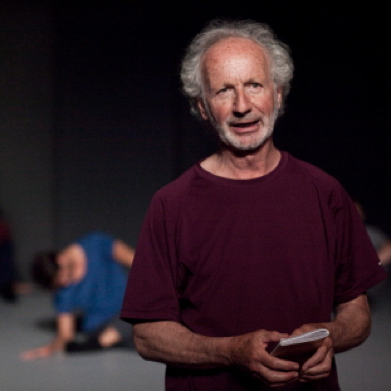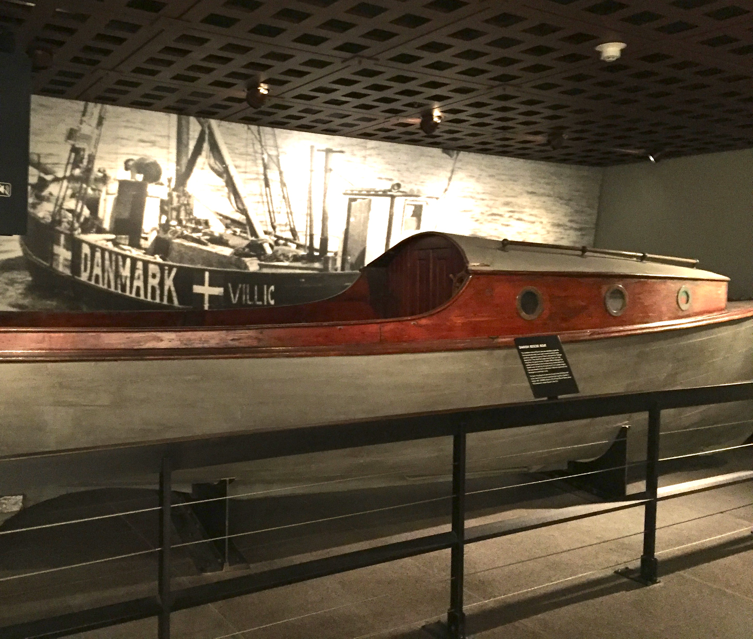In 1970 we were young Mill Valley exiles racketing around Europe in our new fire-engine red Volkswagen camper. One summer afternoon we stopped for lunch at the bar/café in Stockholm’s Royal Swedish Opera House where, for some unknown reason, we had trouble ordering two glasses of wine. A young man seated near us offered to help clear up the confusion and then laughingly told us not to feel bad about it, because the waiter was from somewhere in the Balkans and didn’t speak either passable Swedish or English. In this odd way – because we were foreigners – we met an extraordinary man.
 His name is Etienne Glaser. We talked during lunch that day and he invited us to meet him later at his apartment. He wanted to help us plan our Swedish itinerary, to make it special for us. It turns out that Etienne, then in his early 30’s, was already a famous director at the Opera as well as a film actor and director of note. Later that day he told us his story. It went like this…
His name is Etienne Glaser. We talked during lunch that day and he invited us to meet him later at his apartment. He wanted to help us plan our Swedish itinerary, to make it special for us. It turns out that Etienne, then in his early 30’s, was already a famous director at the Opera as well as a film actor and director of note. Later that day he told us his story. It went like this…
In 1940 the Germans invaded Denmark despite the Danes declared neutrality and a recently signed non-aggression treaty. They decided to allow the Danish government to stay in power and cite it as “a model protectorate.” As a consequence, there was an uneasy peace for almost three years and no attempt was made to aggressively enforce the anti-Jewish policies of the Third Reich. All that changed in August of 1943 as Danish Resistance activities grew in number and amplitude.
At the time there were approximately 8000 Danish Jews. Etienne was one of them, a six year old child of Jewish parents. As I recall his parents were also artists, but that isn’t the important part of the story. The important fact is that they were Jewish and in 1943 they needed to find a safer place. In spite of the Danish king’s defiant support of the Jews (he and his countrymen proudly wore the yellow star and armband required of all Jews) the Germans were beginning to systematically address “the Jewish problem” – rounding up and transporting them to concentration camps in Poland.
The Danish Resistance agreed to help the Glaser family escape and a plan was set in motion. On the night of October 5, 1943 Etienne, his parents and older brother boarded a small fishing boat in Gilleleje north of Helsingor to take them across the 10-mile passage to the Swedish mainland. Everything was set but there was a hitch. Etienne’s infant brother had to be left behind. They were afraid the infant would make a sound, alert the Germans, and endanger the entire operation. The Resistance leader took the infant and told them to get aboard the small vessel – like the one pictured. He assured them that he would care for the child and arrange to reunite them later. Sometime later, dosed with sleeping pills, the infant was transported to Sweden where Etienne’s father picked him up and he was reunited with the family.

Two weeks ago I recalled Etienne’s story as I stood in front of this exhibit honoring the Danish Resistance at the Holocaust Museum in Washington DC. We spent most of a day at the museum. It is comprehensive, exhausting and emotionally upsetting. How could this have happened? How could any group of humans be so inhumane? The exhibits started on the top floor and as we descended we were led through the history and horrors of “the final solution.” I have a close friend whose parents were Holocaust survivors and I’ve been through Berlin’s Jewish Museum and Memorial to the Murdered Jews of Europe, but this was something more. There are a few good stories like Etienne’s but the overall impression is dark and devastatingly sad. Knowing his story somehow drew me in and made it more personal and relatable.
I do believe in a certain kind of fate – or fateful serendipity – and this past weekend, the week we returned from our time in DC, a film that cleared our serendipity threshold opened in theaters. Denial tells the true story of David Irving an English historian and famous Holocaust denier who brought a libel suit against American historian Deborah Lipstadt and Penguin Books to prove his assertion that there was no “final solution” and that there were no gas chambers at Auschwitz.
Timing, as they say, is everything and, having just been to the Holocaust Memorial, M and I sat mesmerized as we watched the movie version of the Irving trial play out in the theater. In the film, as in the real life trial, Irving’s reputation as a historian is ultimately discredited when Justice Charles Gray’s declares “Irving has for his own ideological reasons persistently and deliberately misrepresented and manipulated historical evidence; that for the same reasons he has portrayed Hitler in an unwarrantedly favourable light, principally in relation to his attitude towards and responsibility for the treatment of the Jews; that he is an active Holocaust denier; that he is anti-semitic and racist and that he associates with right wing extremists who promote neo-Nazism.” Lipstadt and her legal team were victorious.
We think we know that good evidence always supports historical truth but there are those who continue to deny not only the Holocaust but also global warming, evolution, and other scientifically supported truths. If you haven’t seen it, Denial is an unsettling, suspenseful way to spend an evening and may make you less confident about how to defend the truth of your beliefs. It’s a good one.
So what happened to Etienne Glaser? I’ve lost track of him. but I know he is still acting and directing.I’ve tried to reconnect with him through the web but I haven’t been able to find contact information for him. He was very generous to us. He introduced us to people in the far north of Sweden who invited us to lunch and to one of the curators of the Moderne Museet (Modern Art Museum) in Stockholm who introduced us to a famous American artist who also became a friend. I’d like to thank him again for his generosity and the connections he helped us make.

This is the Holocaust Memorial’s Hall of Remembrance
































Jack, once again a wonderful and timely post. It reminded me why I tipped from becoming an archeologist to dealing with cultural materials that had not yet gone into the ground, curating and exhibiting artifacts in historic and ethnographic museums. Good museum exhibits can be powerful in their ability to reach people in a way that is more graphic than a book. “Executive Order 9066” was the one that was most memorable for me (long before the Holocaust Museum was created -or it might have been). In the late 1980s I borrowed EO 9066 from the Wing Luke Museum to show in the museum at OSU, and suffered the ire of a museum supporter who dropped his membership in retaliation for us showing an exhibit about “those Japs”. Keep up the great work, I’ve enjoyed all your posts!
TJ, Well done again. As an aside, Jane’s Dad was a Danish resistance cell leader when he was in his late teens and early 20s. At the time he was a young medical student. Later in life he became a renowned orthopedic surgeon. During the war he lived with his mother, aunt and sister behind Glyptoteket which is a museum of note that sits right next to Tivoli Gardens. I mention this because it was right opposite police headquarters which was taken over by the Nazis. They visited the apartment one day and his aunt was feigning being ill and was in bed laying on top of a number of pistols. I think of our young troops, in battles around the world, who stepped forward, left the malls and are trying to make a difference. They are very similar to the Danish resistance fighters of yore. Bless them all. Duke
Great story Jack. Keep it up.
Hi Jack –
What a moving remembrance, thank you for sharing it with all of us. xo Kate R